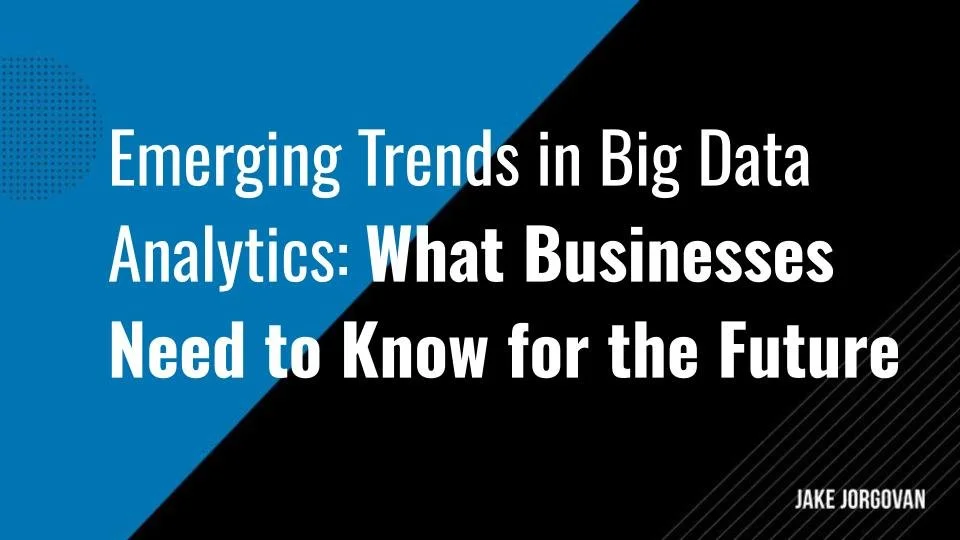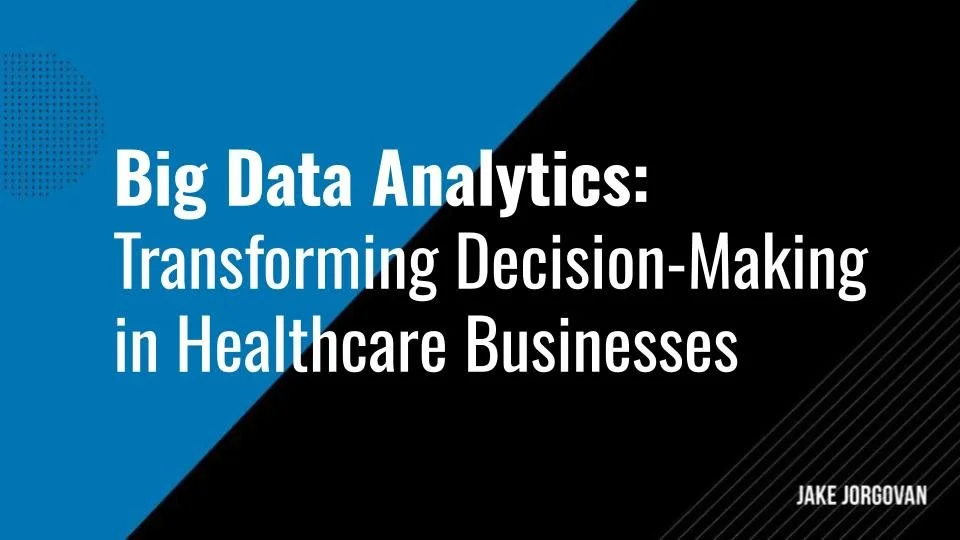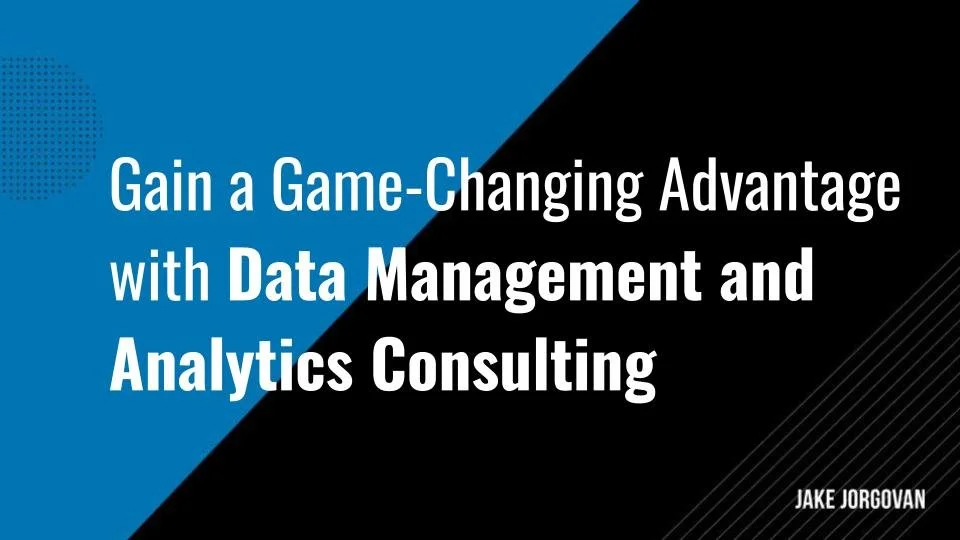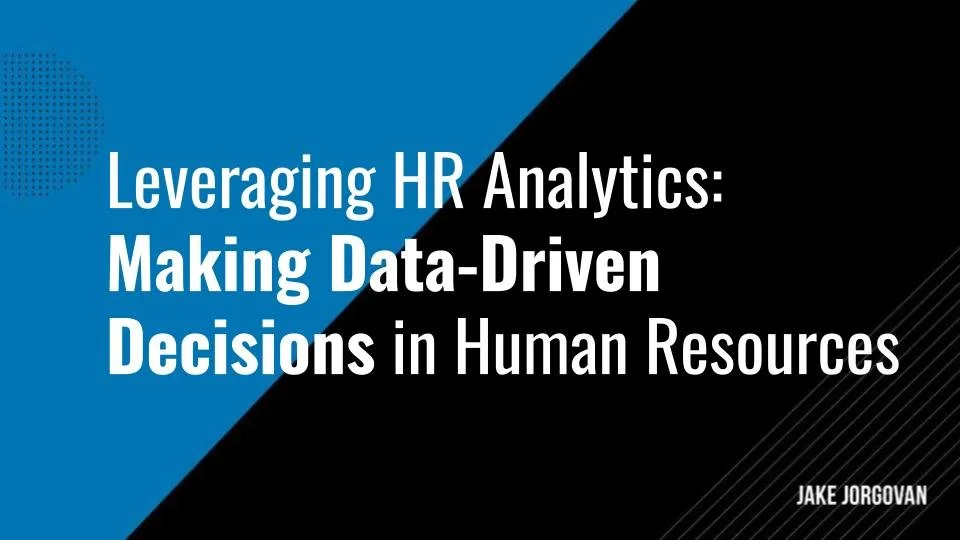Leveraging HR Analytics: Making Data-Driven Decisions in Human Resources
There’s no denying we live in an increasingly data-driven world.
And HR professionals now face the unique challenge of effectively utilizing analytics to improve workforce management and organizational performance.
Luckily, you've arrived at the right place if you're seeking to understand and implement HR analytics in your organization.
This article discusses:
The fundamentals of HR analytics
The key areas of focus for data-driven decision-making
Tool recommendations
What leveraging HR analytics looks like in action (We’ll create an example)
Continue reading to start your journey toward mastering HR analytics and transforming your HR strategies with data-driven insights.
What Are HR Analytics?
The role of Human Resources has evolved significantly.
No longer confined to administrative duties, HR now plays a pivotal role in shaping organizational strategy.
This is largely due to the power of HR analytics.
To fully leverage HR analytics, it's imperative for you to have a comprehensive understanding of what HR analytics entails and its key components.
Definition and Scope of HR Analytics
HR analytics, also known as people analytics or workforce analytics, involves the systematic collection and analysis of workforce data to enhance human resource decision-making.
With the help of statistical models, machine learning, and data visualization tools, HR professionals can gain insights into various aspects of the employee lifecycle, including recruitment, performance management, and retention. This data-driven approach allows organizations to identify trends, predict outcomes, and implement strategies that match their business objectives.
By using HR analytics, companies can proactively address factors contributing to employee turnover, which reduces associated costs and maintains a more stable and engaged workforce.
HR analytics transforms raw data into actionable insights, guiding evidence-based decisions that improve both employee satisfaction and organizational effectiveness. As the business landscape becomes increasingly competitive, the ability to make informed HR decisions is crucial for attracting and retaining top talent.
Key Areas of Focus for Data-Driven Decision-Making in HR
Applying data-driven insights across various human resources areas allows you to move beyond guesswork to a more analytical approach.
Doing so improves your operational effectiveness and lets you adapt proactively to emerging trends.
And this leads to a more engaged, well-managed, and productive workforce, ultimately driving business success.
Let's take a closer look at what you should focus on when leveraging HR analytics.
Talent Acquisition Optimization
This process involves analyzing recruitment data to find the best ways to attract top talent.
To deploy this method, follow the steps below:
Gather your recruitment data: Start by collecting all your recruitment data. This includes where your candidates are coming from (like job boards, social media, referrals), how many applicants you get for each role, the quality of applicants, and the time it takes to hire.
Identify key metrics: Decide on the key metrics you want to focus on. Common ones include the source of hire, cost per hire, time to fill a position, and the offer acceptance rate. The Academy to Innovate HR states these are the most important recruiting metrics:
Analyze the data: Look at your metrics to see trends and patterns. For instance, you might find that certain job boards bring in more qualified candidates than others, or referrals lead to quicker hires. Considering that the average time to fill a position in the U.S. is around 44 days, identifying efficient channels can help reduce this timeframe.
Compare against benchmarks: If possible, compare your metrics with industry benchmarks. This helps you understand how your recruitment process stacks up against others in your field.
Identify best sources for quality hires: Based on your analysis, pinpoint which recruitment channels are most effective for your organization. These are the sources that bring in high-quality candidates efficiently and cost-effectively. Faster Capital claims these are the most important recruitment channels:
Adjust your recruitment strategy: Use your findings to refine your recruitment approach. For example, if you find that certain job boards are more effective, allocate more resources to them. If employee referrals yield good results, consider enhancing your referral program.
Monitor and iterate: Continuously monitor these metrics and adjust your strategies as needed. Recruitment landscapes can change, so it's important to stay adaptive and responsive to new trends and data.
The graphic below shows some common metrics and best practices when it comes to optimizing talent acquisition:
Remember, the goal is to use data to make informed decisions about where to focus your recruitment efforts for the best results in attracting top talent.
Tools to use:
Applicant Tracking Systems (ATS): Platforms like Greenhouse, Lever, or BambooHR help in tracking applicants through the recruitment process and provide data for analysis.
Recruitment analytics tools: Software like LinkedIn Talent Insights (shown below) or Google Analytics can provide insights into where your candidates are coming from and how they interact with your job postings.
Social media analytics: Tools integrated with social media platforms to track the effectiveness of social media recruitment campaigns.
Employee Performance Analysis
Employee performance analysis involves utilizing performance metrics to assess employee productivity and identify areas for improvement or training needs. Research from McKinsey indicates that organizations focusing on employee performance are 4.2 times more likely to outperform their peers, achieving an average of 30% higher revenue growth.
To take advantage of this method, you first need to establish what performance metrics are relevant for your organization. These could include sales targets, customer service ratings, project completion times, or quality of work.
Gather data on these metrics for each employee. This can come from various sources like performance reviews, productivity software, customer feedback, or sales records. Then, determine what constitutes good performance in your organization. This might be based on historical data, industry standards, or goals set by your company.
Compare each employee's performance data against your benchmarks. Look for patterns such as who consistently meets or exceeds targets and who does not. For each employee, identify areas where they excel and areas that need improvement. This could be specific skills, work habits, or knowledge gaps.
Based on the analysis here, create tailored plans for employees who need development. This could include training programs, mentorship, additional resources, or targeted feedback.
Remember to have open and constructive discussions with your employees about their performance. Offer praise for strengths and discuss plans for addressing weaknesses.
The next step is to put the improvement plans into action. This could involve formal training sessions, on-the-job coaching, or providing additional resources and support. Continuously track the progress of each employee. Be ready to adjust the improvement plans if certain strategies are not working or if new challenges arise.
When employees show improvement, always be sure to acknowledge their progress. Recognition and rewards can be powerful motivators for continued growth and high performance.
Using employee performance data to enhance productivity and support continuous professional development within your organization is a must for data-driven decision-making.
Tools to Use:
Performance management software: Systems like Workday (pictured below), SAP SuccessFactors, or Oracle HCM Cloud offer robust tools for tracking and evaluating employee performance.
Data visualization tools: Software like Tableau or Microsoft Power BI can help in visualizing performance data and identifying trends and patterns.
Feedback and survey tools: Platforms like SurveyMonkey or Qualtrics are used to conduct and analyze employee feedback surveys.
Workforce Planning and Forecasting
Workforce planning is used to anticipate future staffing needs based on business growth and turnover trends, as shown in the graphic below:
To conduct this analysis, you should do the following:
Gather historical data: Begin by collecting historical data on your workforce. This includes the number of employees, turnover rates, hiring rates, retirement rates, and any seasonal variations in staffing.
Understand business goals and projections: Align your workforce planning with the company's future goals and projections. This could involve expansion plans, new product launches, or market shifts that will impact staffing needs.
Identify key workforce metrics: Determine the critical metrics that will impact your workforce planning. These might include employee turnover rate, average time to fill positions, and employee productivity rates.
Analyze trends and patterns: Look at your historical data and identify trends. For example, if you notice certain times of the year when turnover spikes or when you typically need to hire more staff. Understanding these patterns is especially important when you consider that the average tenure of an employee in the U.S. is 4.1 years.
Forecast future needs: Based on the analysis and business projections, forecast your future staffing needs. Consider factors like expected turnover, business growth, and the emergence of new roles or skills.
Now, you can develop and implement the staffing plan.
Develop a staffing plan: Create a plan to address these future needs. This could involve strategies for recruitment, training programs to develop internal talent, or plans to restructure teams. Include contingency plans for unexpected changes, such as sudden market shifts, changes in business strategy, or other unforeseen events that could affect staffing.
Engage with department leaders: Collaborate with leaders across different departments to ensure your plan aligns with their specific needs and insights.
Implement the plan: Start executing your staffing plan. This could involve initiating recruitment drives, setting up training programs, or other actions as per the plan.
Monitor and adjust the plan regularly: Regularly review your workforce plan against actual business performance and staffing dynamics. Be prepared to adjust your plan as necessary to respond to new developments.
Following these steps allows you to effectively use HR analytics to anticipate and prepare for future staffing needs. This ensures your organization remains agile and well-staffed to meet its objectives.
Tools to use:
Workforce analytics software: Tools like Visier or PeopleFluent offer specialized analytics for workforce planning.
Predictive analytics tools: Software like IBM SPSS or SAS Analytics provides predictive modeling capabilities to forecast future staffing needs.
HR Information Systems (HRIS): Systems like Zoho People or ADP Workforce Now to track and analyze historical workforce data.
Employee Engagement and Satisfaction Tracking
Employee engagement and satisfaction tracking focuses on monitoring and analyzing employee feedback and engagement levels to enhance workplace culture and retention.
To do this, start by conducting regular employee surveys to gauge engagement and satisfaction. These surveys should cover aspects like job satisfaction, work environment, management effectiveness, and work-life balance. According to Gallup, only 30% of U.S. employees are engaged at work, so there may be significant opportunity for improvement here.
The image below shows some other common employee engagement metrics:
Create channels for employees to provide open and honest feedback. This could be through suggestion boxes, anonymous online platforms, or regular one-on-one meetings with managers. Once you collect survey data, analyze it to identify trends and areas of concern. Pay attention to both high and low scores and look for patterns in the feedback.
Then, organize focus groups with employees to delve deeper into specific issues or concerns identified in the surveys. This provides more qualitative insights into employee sentiments. Be transparent with employees about the findings from these surveys and discussions. Clearly communicate any actions that will be taken in response to their feedback.
Based on the feedback, develop action plans to address the identified issues. This might involve changes in management practices, improvements in the work environment, or initiatives to boost work-life balance.
Now it’s time to put the action plans into effect. This could mean rolling out new company policies, offering new employee benefits, or making changes to the office environment. Ensure that your managers and leaders are trained to foster a positive work environment and to address employee concerns effectively.
After implementing changes, monitor their impact on employee engagement and satisfaction. This can be done through follow-up surveys or informal feedback. Be prepared to adapt your strategies based on the effectiveness of your actions. Employee engagement is an ongoing process, and it's important to continually seek ways to improve and evolve.
Following these steps allows you to effectively track and improve employee engagement and satisfaction. This leads to a more positive workplace culture and better employee retention.
Tools to Use:
Employee engagement platforms: Tools like Glint, Culture Amp, or Gallup Access for conducting engagement surveys and gathering actionable insights.
Feedback and communication tools: Platforms like Slack or Microsoft Teams can facilitate open feedback and communication channels.
Data analysis software: Again, tools like Tableau or Microsoft Power BI for analyzing survey data and tracking trends over time.
Compensation and Benefits Analysis
This analysis is about evaluating your compensation structures and benefits packages to ensure they are competitive and fair.
Here’s how you can approach this:
Gather current compensation data: Start by collecting detailed information about your current compensation and benefits packages. This includes salaries, bonuses, health insurance, retirement plans, and any other perks or benefits offered.
Benchmark against industry standards: Compare your compensation packages with industry standards. Look at data from similar companies in your industry and region to understand the market rate for various roles. For example, the image below shows how often companies tend to give pay increases.
Conduct an internal equity analysis: Analyze compensation within your organization to ensure fairness and equity. Check if employees in similar roles with similar experience and performance are receiving comparable pay.
Survey employee satisfaction with benefits: Get feedback from your employees on their satisfaction with the current benefits. Surveys can be a great tool to understand what benefits are most valued by your workforce.
Identify gaps and areas for improvement: Based on your benchmarking and internal analysis, identify where your compensation and benefits might be lacking compared to industry standards or employee expectations.
Explore new benefits options: Consider adding new benefits or adjusting current ones. This could include things like flexible working arrangements, wellness programs, professional development opportunities, or improved healthcare options. In 2024, 69% of U.S. companies offered some form of work location flexibility, which reflects a growing trend toward flexible work arrangements.
Develop a revised compensation strategy: Create a plan to adjust salaries, bonuses, and benefits. Your strategy should align with your company’s budget and business goals while also being competitive and fair.
Communicate changes to employees: Clearly communicate any changes in compensation and benefits to your employees. Transparency is key in maintaining trust and morale.
Implement the changes: Roll out the new compensation and benefits plan. This might involve adjusting payroll, updating benefits packages, and working with HR to ensure smooth implementation.
Monitor and adjust as needed: Continuously monitor the impact of these changes on employee satisfaction and retention. Be open to making further adjustments based on feedback and changing market conditions.
Analyzing and adjusting your compensation and benefits ensures that your packages are competitive, equitable, and aligned with both employee needs and business objectives.
Tools to Use:
Compensation Management Software: Systems like PayScale, Salary.com, or CompensationXL for benchmarking and managing compensation plans.
Benefits Administration Software: Platforms like Gusto or Zenefits to manage and analyze employee benefits packages.
Market Research Tools: Access to salary surveys and industry reports from sources like Glassdoor or the Bureau of Labor Statistics for external benchmarking.
HR Analytics Case Study: Google's Use of People Analytics
Google has extensively utilized "people analytics" to enhance various aspects of its human resource management. One notable initiative is Project Oxygen, which aimed to identify the key behaviors of effective managers within the organization. By analyzing performance reviews, feedback surveys, and other relevant data, Google identified eight essential qualities that successful managers exhibit.
This insight led to the development of targeted training programs to cultivate these behaviors across their managerial staff, resulting in improved team performance and employee satisfaction.
Additionally, Google employs predictive analytics to address employee retention challenges. By examining factors such as employee tenure, performance ratings, and compensation details, the company can predict which employees might be at risk of leaving. This proactive approach allows HR to implement tailored retention strategies, such as career development opportunities or adjustments in compensation, thereby reducing turnover rates and retaining top talent.
Through these data-driven strategies, Google demonstrates how integrating HR analytics into decision-making processes can lead to more effective management practices and a more engaged workforce.
Note: Specific details about Google's use of people analytics are based on publicly available information and may not reflect the most current practices.
Leverage Your HR Analytics Today
During our exploration, we’ve explored how HR analytics can be effectively utilized to facilitate data-driven decision-making in your organization.
To fully take advantage of HR analytics, you need to invest in the right tools and training. This way, you’ll accurately interpret data and translate it into actionable strategies.
Embracing HR analytics not only streamlines organizational processes but also paves the way for a more dynamic and informed approach to human resource management.
Over time, this approach will bring significant improvements in your workforce satisfaction and overall business success.
FAQ — Get More Out of HR Analytics
What is HR analytics used for?
HR analytics is used to collect, analyze, and interpret workforce data to improve decision-making in areas like hiring, employee engagement, performance management, and retention.
What is the value of HR analytics?
HR analytics helps organizations make data-driven decisions, reduce turnover, enhance productivity, and optimize workforce planning by identifying trends and predicting future HR needs.
Who needs HR analytics?
HR analytics is valuable for HR professionals, business leaders, and executives who want to improve talent management, workforce planning, and overall business performance through data insights.
What are examples of HR analytics?
Examples of HR analytics include turnover analysis, employee performance tracking, recruitment metrics (such as cost per hire), and predictive modeling for workforce planning.



















